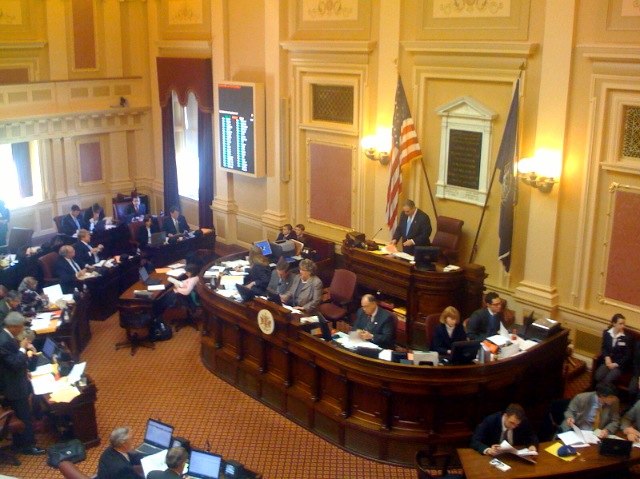The Constitution of the Commonwealth of Virginia is the document that defines and limits the powers of the state government and the basic rights of the citizens of the Commonwealth of Virginia. Like all other state constitutions, it is supreme over Virginia's laws and acts of government, though it may be superseded by the United States Constitution and U.S. federal law as per the Supremacy Clause.
The Virginia Constitutional Convention, 1830, by George Catlin
George Mason, one of the principal architects of the 1776 Virginia Constitution
1830 Virginia Constitution, page one
John C. Underwood. He so dominated the 1867–1868 constitutional convention that the resulting document became known as the "Underwood Constitution".
The government of Virginia combines the executive, legislative and judicial branches of authority in the Commonwealth of Virginia. The current governor of Virginia is Glenn Youngkin. The State Capitol building in Richmond was designed by Thomas Jefferson, and the cornerstone was laid by Governor Patrick Henry in 1785. Virginia currently functions under the 1971 Constitution of Virginia. It is Virginia's seventh constitution. Under the Constitution, the government is composed of three branches: the legislative, the executive and the judicial.
The Virginia Department of Highways Building in Richmond, headquarters of the Department of Transportation
The Senate chamber of the Virginia State Capitol
The Supreme Court building in Richmond
Richmond City Hall








